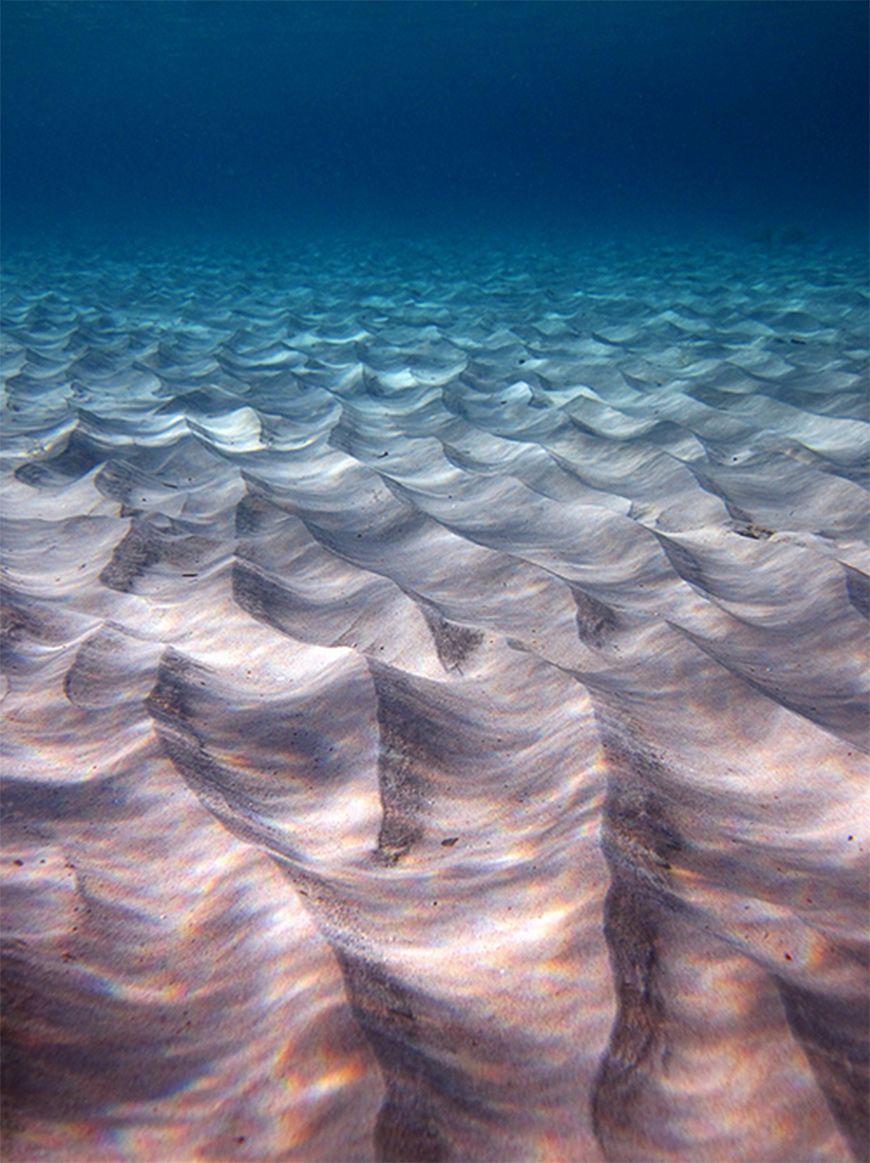To probe the seafloor scientists send sound waves down through the ocean and seafloor and record reflected echoes with ocean bottom seismographs and hydrophones trailing behind a ship.
Sea floor to waves.
The delay between sending and receiving the signal provides a measurement of ocean depth.
Continental shelf 300 feet continental slope 300 10 000 feet abyssal plain 10 000 feet abyssal hill 3 000 feet up from the abyssal plain seamount 6 000 feet.
Multibeam echo sounders mbes.
The hull mounted multibeam transceiver sends out a beam of sound waves see diagram at right which are reflected off the seafloor back to a receiver on the ship.
Two new computer programs for analyzing the effects of waves on the seafloor are described.
Mud basically moves up and down under the action of the waves.
The sea the world ocean or simply the ocean is the connected body of salty water that covers over 70 of earth s surface 361 132 000 square kilometres 139 434 000 sq mi with a total volume of roughly 1 332 000 000 cubic kilometres 320 000 000 cu mi.
2017 divergence of seafloor elevation and sea level rise in coral reef ecosystems.
This forces the wave to grow upwards so wave height increases.
This graphic shows several ocean floor features on a scale from 0 35 000 feet below sea level.
Our idea was to design a carpet that sits on a seafloor and acts like a mud layer and extracts energy from ocean waves and converts it into useful energy.
In tangaroa s kongsberg em302 multibeam system the signal is divided into 288 separate beams which form a swath on the seafloor.
During the war most of the sound waves ricocheted off the ocean bottom.
The base of the wave is slowed down by friction against the sea bottom while the top of the wave rushes ahead so the wave crest begins to lean more and more forward.
1 stab max for computing transient pore water pressures and effective stresses.
That means that the deepest water molecules set into circular motion by the wave s energy run into the seafloor.
The sonar system mounted on the hull of the vessel sends out sound waves that bounce off the seafloor and return to the ship.
These measurements are then used to produce a map charting the seafloor bathymetric map.
Coastal sea waves at paracas national reserve ica peru.
The time it takes for the sound to return allows scientists to determine the composition and structure of the material the sound wave travels through.
This animation shows how sound waves are used to create pictures of the seafloor and ocean crust after the war scientists pieced together the ocean depths to produce bathymetric maps which reveal the features of the ocean floor as if the water were taken away.
And smaller scale motions called turbulence augers within the mud layer and that converts the wave energy into heat.
And 2 stab w for computing residual porewater pressures and estimating liquefaction potential.




























